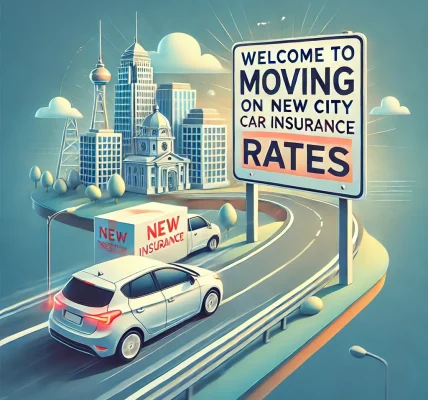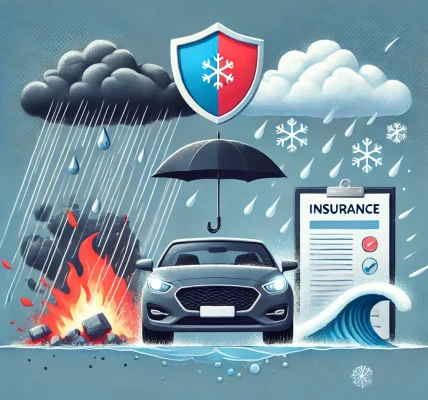Electric vehicles (EVs) are rapidly gaining popularity worldwide due to their environmental benefits, lower running costs, and technological advancements. However, when it comes to car insurance, EVs introduce new factors that influence costs and coverage options. In this article, we’ll explore how electric vehicles impact car insurance rates, what factors insurers consider, and how EV owners can optimize their insurance coverage.
Why Are Electric Vehicles Different in Car Insurance?
EVs differ from traditional gasoline-powered cars in several ways:
- They use advanced battery technology instead of internal combustion engines.
- Repairs often require specialized mechanics and parts.
- They incorporate high-tech safety features and autonomous driving assistance.
- Their overall market value is often higher than comparable gasoline vehicles.
These differences lead insurers to assess EVs differently when determining insurance premiums and policy structures.
Factors That Affect Car Insurance Costs for EVs
1. Higher Vehicle Cost & Repair Expenses
Electric vehicles typically cost more upfront than gasoline-powered cars due to their expensive battery packs and high-tech components. Since insurance covers the cost of repairing or replacing the vehicle in case of an accident, higher vehicle costs lead to higher premiums.
Additionally, repairing an EV often requires specialized technicians and proprietary parts, which can be more expensive compared to traditional car repairs.
2. Battery Replacement Costs
The battery is one of the most expensive components of an EV. If it gets damaged in an accident, replacing it could cost thousands of dollars. Since insurance policies often factor in repair and replacement costs, this can contribute to higher premiums.
3. Advanced Safety Features & Accident Prevention
Many EVs come with autonomous driving assistance, lane departure warnings, emergency braking, and other advanced safety features. While these technologies reduce the likelihood of accidents, insurers may factor in the cost of repairing or replacing these high-tech components in case of a collision.
4. Risk of Fire & Battery Damage
Lithium-ion batteries, commonly used in EVs, have a small but notable risk of overheating or catching fire after an accident. Insurance companies consider this risk when determining coverage and premiums.
5. Specialized Repair Shops & Limited Service Centers
Unlike traditional cars, which can be repaired at thousands of service centers, EVs often require brand-specific repair shops and certified mechanics. Limited availability of repair centers means higher labor costs and longer waiting times, contributing to higher insurance rates.
6. Government Incentives & Discounts
Many governments offer incentives, tax credits, and even insurance discounts for EV owners. Some insurers also provide lower premiums for EVs due to their lower carbon footprint and reduced environmental impact.
7. Driving Behavior & Usage-Based Insurance (UBI)
Many EV owners drive their vehicles more conservatively to maximize battery efficiency. Insurance companies are starting to use telematics and usage-based insurance models to track driving behavior, rewarding safer drivers with lower premiums.
Coverage Options for Electric Vehicles
1. Comprehensive Coverage
Given the high value of EVs, comprehensive insurance is highly recommended. It covers damages from accidents, theft, natural disasters, and vandalism.
2. Collision Coverage
Covers damage to your EV in case of a collision with another vehicle or object, ensuring that costly repairs don’t come out of your pocket.
3. Battery-Specific Coverage
Some insurers offer special coverage for EV batteries, including protection against overheating, accidental damage, and manufacturer defects.
4. Roadside Assistance & Towing
Since EVs rely entirely on battery power, running out of charge is a real possibility. Many insurance policies now include roadside assistance for emergency charging or towing to the nearest charging station.
5. Newer EV-Specific Policies
Some insurance companies now offer EV-specific policies that include:
- Coverage for charging stations installed at home.
- Reimbursement for rental vehicles in case of battery-related breakdowns.
- Protection against cyber threats for connected car technology.
How EV Owners Can Lower Their Insurance Costs
While EV insurance can be more expensive than conventional cars, here are some ways to reduce costs:
1. Compare Multiple Insurance Providers
Different insurers offer varying rates for EVs. It’s crucial to compare multiple quotes to find the best deal.
2. Take Advantage of Discounts
Many insurance companies offer:
- Green vehicle discounts for eco-friendly cars.
- Bundled insurance discounts if you insure multiple vehicles or combine with home insurance.
- Safe driver discounts if you have a good driving history.
3. Opt for a Higher Deductible
Choosing a higher deductible (the amount you pay before insurance kicks in) can lower your monthly premium. However, ensure that you can afford the out-of-pocket cost if needed.
4. Use Telematics & Usage-Based Insurance
Some insurers offer telematics-based insurance where your premium is based on actual driving behavior. If you drive safely and conservatively, you could qualify for lower rates.
5. Maintain a Clean Driving Record
A history of safe driving with no major violations or accidents helps keep insurance costs down.
6. Install Security Features
Installing anti-theft devices, dash cams, and GPS trackers can help lower insurance premiums by reducing the risk of theft or loss.
7. Consider Manufacturer Insurance Programs
Many EV manufacturers, like Tesla, offer their own insurance programs, which may provide more competitive rates and better coverage for their vehicles.
Future Trends in EV Car Insurance
With the rise of EV adoption, insurers are adapting their policies to better accommodate electric vehicles. Future trends include:
- More tailored EV insurance policies that account for battery longevity, charging infrastructure, and autonomous driving features.
- Integration of AI and telematics to offer real-time premium adjustments based on actual driving habits.
- Expanding coverage options for EV-specific risks such as charging station damage and cyber threats.
- Lower insurance costs over time as EV repair infrastructure improves and battery prices decrease.
Conclusion
Electric vehicles are changing the landscape of the automotive industry, and their impact on car insurance is significant. While EV insurance can be more expensive due to higher repair costs and battery risks, owners can take steps to lower their premiums by choosing the right coverage, driving safely, and exploring available discounts.
As EV technology continues to evolve and insurers refine their offerings, we can expect more competitive and specialized insurance policies that cater to the unique needs of electric vehicle owners. 🚗⚡
By staying informed and making smart insurance choices, EV owners can protect their investment while enjoying the benefits of a greener and more sustainable future.



